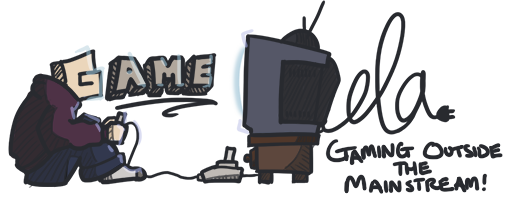When I first played The Legend of Zelda for the original NES, I got lost. A lot. And the original Death Mountain? It would take a frickin’ miracle for me to navigate that maze of hellish rooms filled with deadly monsters from memory. And so, I discovered my innate ability to create graph paper maps to guide myself, which would later help while playing D&D, and also Neutopia on the Virtual Console. It turns out that I have a cartography fetish (among others).
The game is thematically just like the original Legend of Zelda. You are the hero. You find the eight underground dungeons sequentially, acquire the magical weapon, defeat the boss, acquire the magical artifact, then defeat the evil asshat who started the whole thing in the beginning. The eight dungeons are spread out across four planes—normal, subterranean, watery island, and cloud—with two dungeons per plane. The planes, eight by eight grids of scenery, become increasingly more complex to navigate, making it increasingly easier to get lost. So, you grab your graph paper and make a map.
 This is my map.
This is my map.
Really, this is the reason to play this game, because it sure as hell is not the fabulous ending or the engaging NPC conversations or a moral compass that compels you to defeat the evil Dirth who could just as easily be a good individual who is just misunderstood.
The music is average while still being interesting and fun to listen to, but it just as easily fades into the background. The “you have dropped to a dangerous level of health” noise so common in The Legend of Zelda games is also present here, and it is three times as annoying. No—ten times. I would mute the TV just to avoid hearing it; it makes you want to scream and rip your little sister’s hair out, much to her discomfort. The other sound effects are all used well and fit commendably in the game’s world.
The graphics are standard fare for 1990. A vast array of sprites and creatures, including what appears to be grasshoppers with the legs of a Vegas showgirl and slightly used condoms that bubble up and down, keep the game interesting as long as you have a nostalgic bone in your body. Plus, you can show it to your friends so they can say, “What the hell is that!?”
The controls are standard, as you turn the Wiimote sideways and use its face buttons for movement and attacks. One of the most interesting things about Neutopia is that the sword in this game sucks. It suffers from poor hit detection, so enemies you attack are often missed if they are slightly above or below you on a horizontal line. This would be a horrible detraction if you did not find a fire wand in the beginning of the first plane. The wand has a wider attack range and width and, at times, does more damage than your sword. It is also inexplicably connected to your health meter, so the more health you have, the stronger the wand is, which makes you want to find more health by exploring the planes. This also makes for much phallic humor.
The game does suffer from a few gameplay issues, but the sword’s poor hit detection is kind of irritating and the most prominent drawback. There are plenty of opportunities to use bombs to discover secret rooms and NPCs’ homes, but it is feast or famine when it comes to stocking them. Either you pick them up left and right from every enemy you fry, or you have to backtrack 20 screens to find an NPC who is selling what you need. Some of the bosses are easy to defeat, but the difficulty is spread out among all of them rather well, so some require a second go. Still, the worst issue this game had when originally released on the TurboGrafx-16 has been fixed with this re-release. This game had no save function, which was just plain stupid. Fortunately, this game now has a reasonably useful auto-save feature.
Overall, having OCD and making thorough maps is the best reason to play this title, but it’s actually cute, somewhat engaging, and moderately enjoyable. That being said, Neutopia is a gem among Virtual Console titles, which typically range from total shite to utter garbage water if they’re not one of the flagship titles like Mario or Sonic. I dropped about ten hours into this game, so clearly it’s worth the price if you want to relive some Legend of Zelda glory days or like to get a good value for your money.
Plus, it was good enough to merit a sequel.

